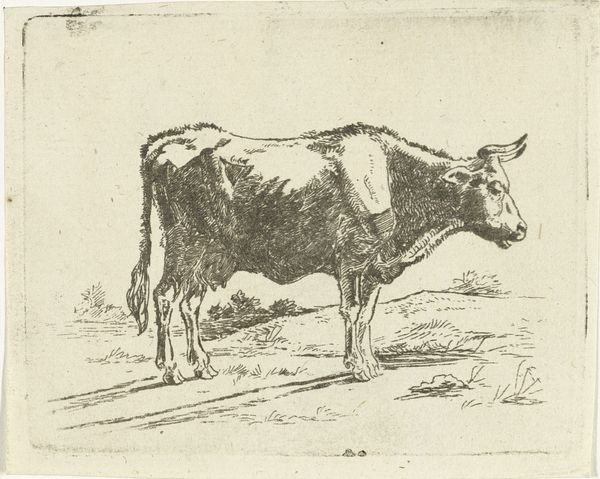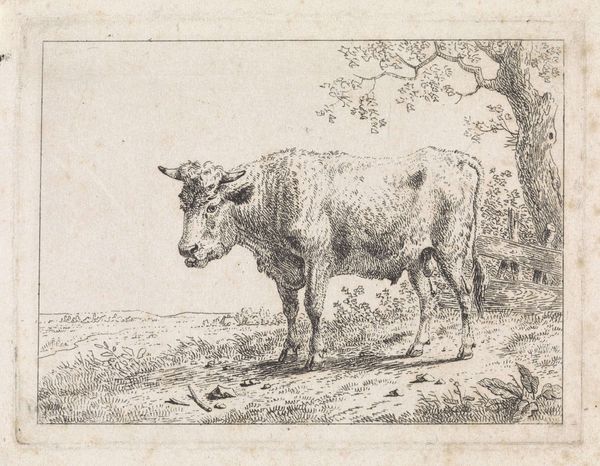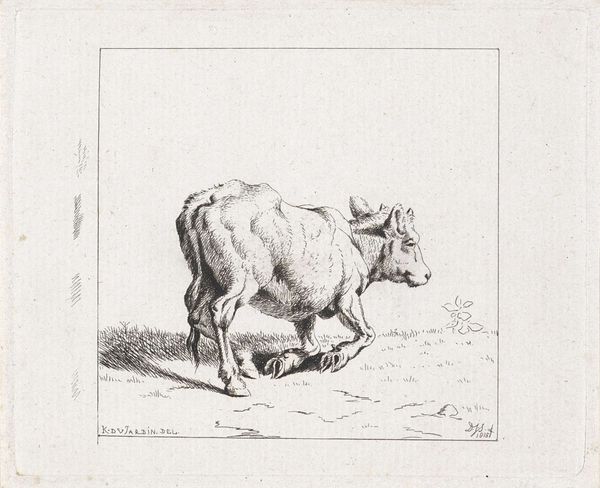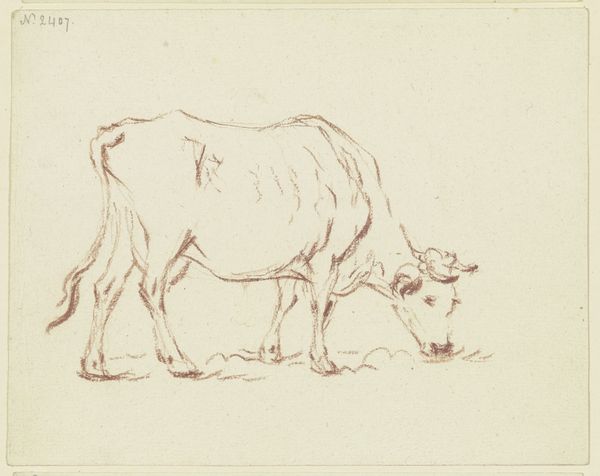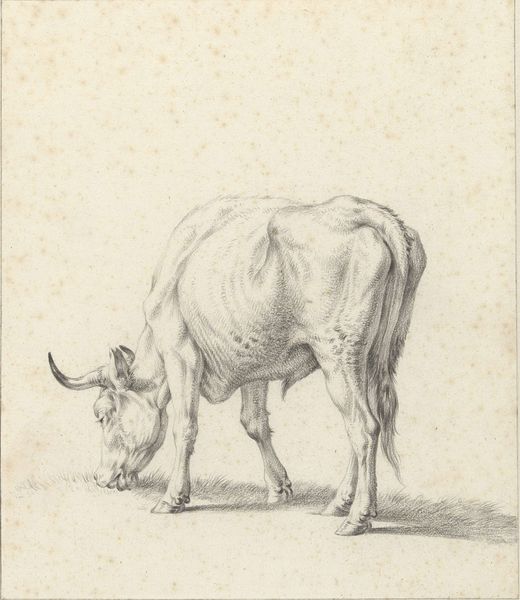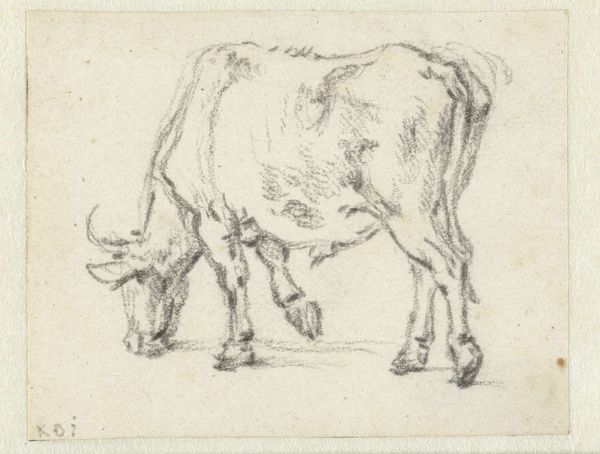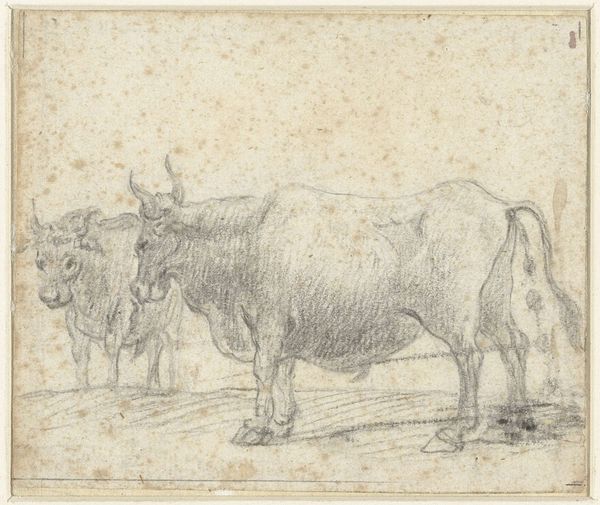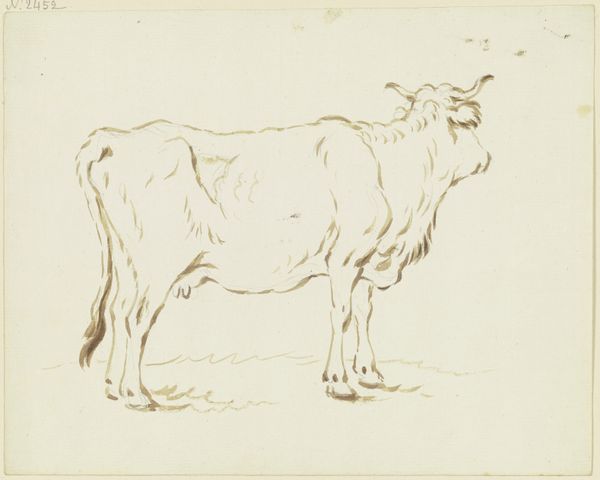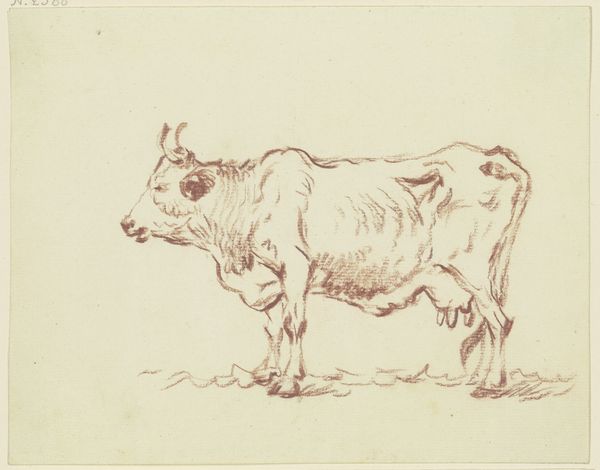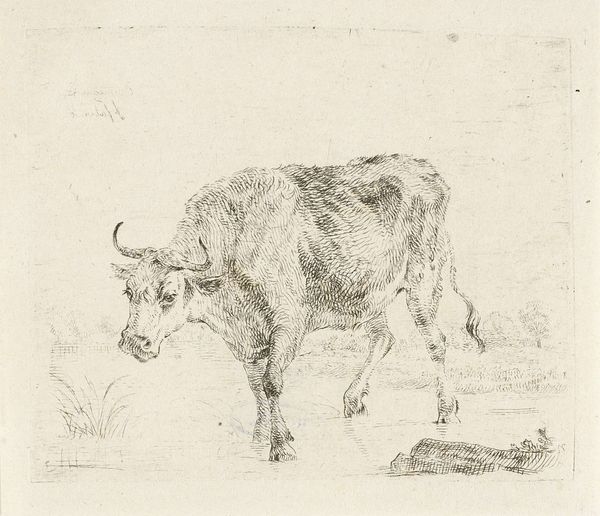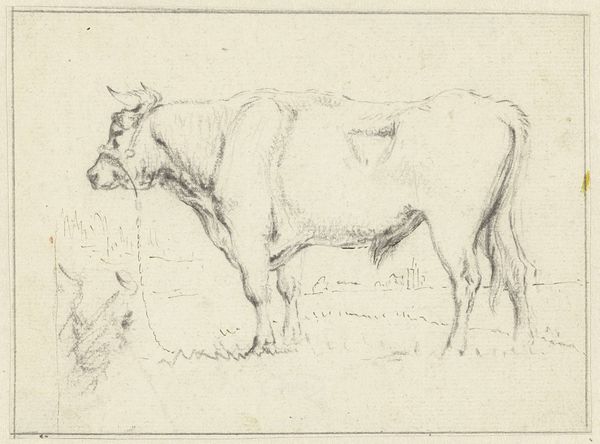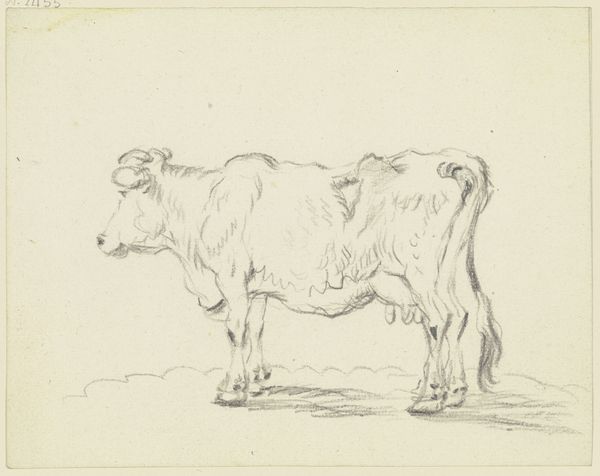
drawing, pencil
#
drawing
#
animal
#
pencil sketch
#
landscape
#
pencil
#
realism
Dimensions: height 142 mm, width 117 mm
Copyright: Rijks Museum: Open Domain
This is Frederik Lodewijk Huygens's drawing, "Stier," made in the Netherlands sometime in the first half of the 19th century. Huygens, working amidst the rise of scientific illustration, offers us a study of a bull, rendered with meticulous detail in pen. But, this isn't simply an objective record. The bull, a symbol deeply embedded in Western culture, carries a wealth of associations from ancient mythology to agricultural prowess. In Huygens's time, the Netherlands was undergoing significant agrarian reform, and images of livestock were tied to notions of national identity and economic prosperity. Yet, the bull also stands as a figure of masculine strength, a potent symbol in a society grappling with evolving gender roles. The artist’s delicate lines capture both the animal's physical form and its symbolic weight, inviting us to reflect on the complex interplay between nature, culture, and identity. We are left with an image that is at once scientific and deeply evocative.
Comments
No comments
Be the first to comment and join the conversation on the ultimate creative platform.

